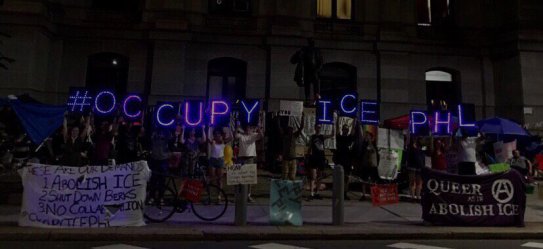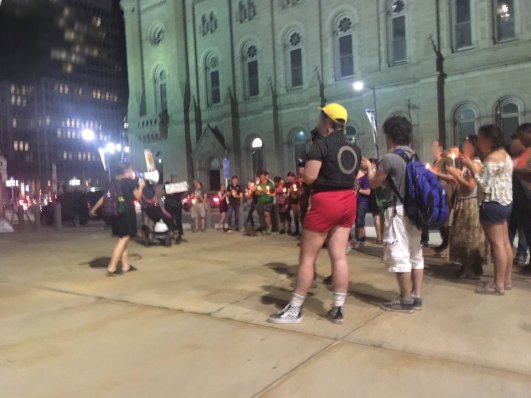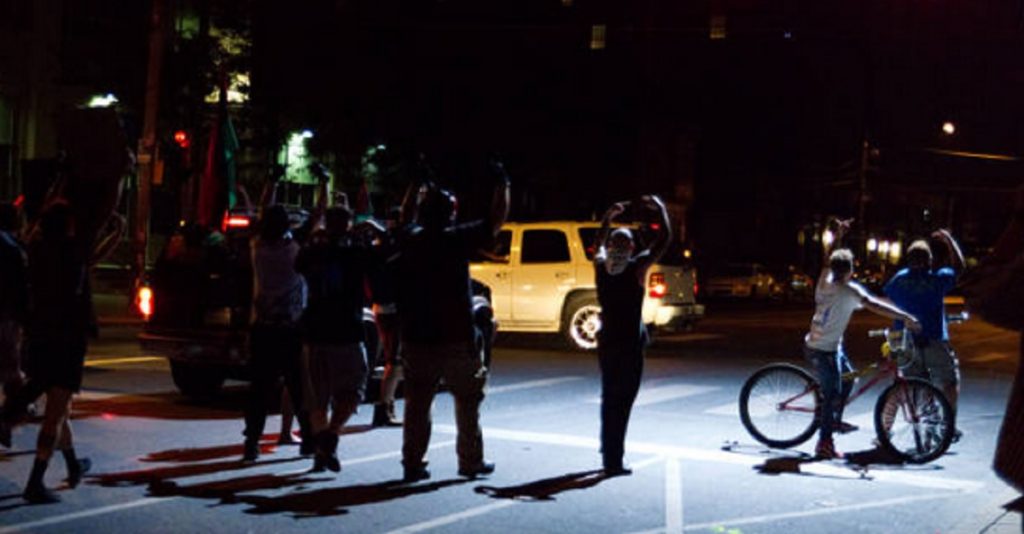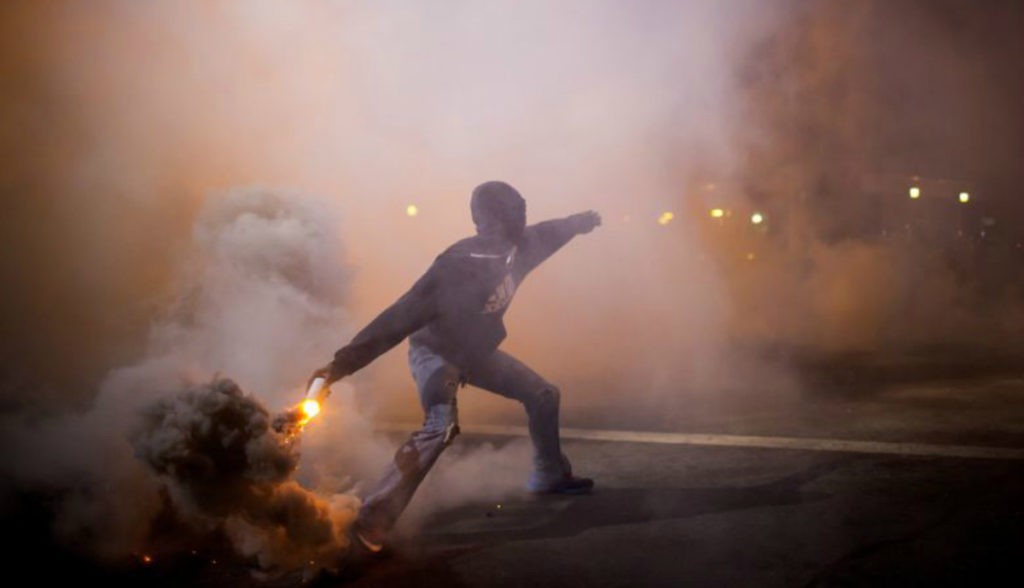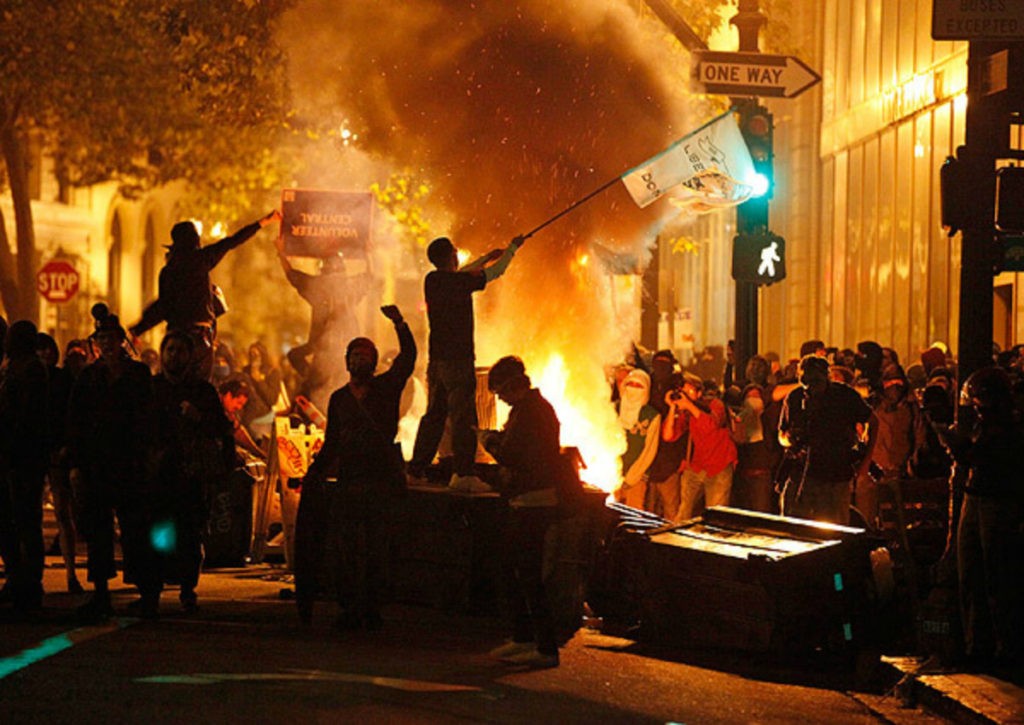from Radical Education Department
Arthur Burbridge
Intro
On July 2nd, a coalition of groups in Philadelphia occupied the local ICE office. In what follows I offer a few quick sketches of the occupation. I was there at the opening of the march at City Hall at 5PM until I had to leave at 9, and then again the next day (July 3rd) at 9:30, leaving just after noon. Today, July 4th, the occupation enters its third day. The account and ideas below are therefore cobbled together from my own experiences, from Unicorn Riot’s live feed, and from reports from comrades who were there when I couldn’t be.
These sketches are partial, and they need to be filled out and corrected as the struggle continues. But I hope they can add to our reflections on the ongoing ICE occupations and help us to continue building and developing radical power.

A loose timeline
The occupation was a planned escalation out of an anti-ICE rally at City Hall. After the rally, about 500 of us took to the streets. The cops were clearly expecting this to some degree—they had shut down a number of roads leading from City Hall to the ICE office—but they were also unprepared. We waded through traffic, turning suddenly and sending the police scrambling. A section of bikers darted ahead to help find a path. When we reached the ICE office at the corner of 8th and Cherry, we set up a two-part camp. The first one was in front of ICE’s van garages on Cherry. The second was on the 8th street side of the building in front of ICE’s main doors.
Tents popped up immediately and people threw down their gear to block the garages. At the other entrances, a bike loaded with food and water blocked the doors. Someone brought in a massive red van with a PA system, and parked it to block Cherry and keep out cop cars. The van started blasting tunes, and people started dancing. Somehow a couch made its way in front of the fenced parking lot for ICE vehicles. Banners swung across the streets
The cop presence was large and growing at this point. I was with the 8th street crowd guarding the building doors. I couldn’t see what was going on around the corner at the garage. But dozens of bike cops were lined up across from us. Within 15 or 20 minutes they rushed the crowd, swinging their bikes as weapons for maximum effect. They broke through the occupiers to cut the 8th street crowd in half and secure the building entrances. But the priority was obviously the van garages (we later learned there is an entrance into the building, shared by a women’s center, that ICE employees are exploiting). The pigs backed off and left the 8th street doors to us. Almost immediately the bike brigade stood wheel to wheel and people jumped into the street to cut the road off from the cops.
But police started massing forces to retake 8th. There was a commotion around the corner (since then, I heard a cop just tripped and fell down). The cops on our side panicked and tried to break through the bike line to get across. But the bike crew and the other occupiers around them refused. The line was two or three bikes deep across the street; bikes collided and people pushed back, forcing the cops to retreat.
By 9, there were over 50 cop cars lined up down the street, and rumors of riot gear being unloaded. Over the next few hours, a cop or two started appearing wearing some heavy-duty gear (vest, helmet, gas mask, etc.) that was marked “Counterterrorism Unit.” Around the corner from me—on Cherry—cops apparently tried to bum rush the crowd to break through. They were forced back again and occupiers locked arms to prevent another attack. Occupiers threw up barricades to separate the tents and occupiers from police on the north end of 8th and to create a barrier in front of the garages—wooden pallets, trash, other city debris.
As the night dragged on, more whiteshirts. Ross, the police commissioner, Ross, appeared. Cops demanded the removal of the barricades, the couch, and the banners stretched across the streets. Occupiers allowed these to be carted away. To get rid of the couch, though, the cops had to haul it up into a trash truck. People were screaming at that the police were scabbing the municipal services. By 1 the cops backed down and started trickling away. The threat of an immediate raid lifted. A number of people—maybe 50, I’m not sure—stayed the night. The cops turned on the building floodlights to fuck with people trying to sleep.
But by 6 a.m., police forces were regrouping. By 11, the camp was building its numbers, along with its cop presence. Dozens of beach umbrellas are popping up. It looked like a beach. Chants started up again in earnest. People—many otherwise unconnected to the event—were unloading car after car of food, water, ice, coolers, food.
But the pigs were biding their time for a noon assault to secure the garages. They marched out the mounted police and dozens of regular officers, along with about a dozen or two whiteshirts. Occupiers closed ranks and linked arms. Bike cops charged, shoving people aside along the wall and garage. A dense mass of occupiers refused to move. There were apparently about two dozen arrests. The pigs took control of the garages. They put up and are guarding metal barracades to make sure ICE can keep on working as efficiently as possible. It’s not clear what the future of the occupation will look like from here, but the site is still occupied without any plans to leave.
The event represents one more episode in the growing militancy and radicalism of hilly, and it offers some important lessons as radical struggles continue to grow.
The developing tactic of occupation in Philly
The actions around ICE are a reminder of the Occupy encampment a few blocks away. But this action is different. Occupy was flooded by liberals and libertarians alongside a number of radical individuals and groups. More militant actions, like confrontations with the police, were infrequent and did not occur on a large, coordinated scale. And in Occupy, the strategic plan was extremely unclear. In this vacuum, it seemed like the site was being held simply for the sake of occupying it, regardless of its tactical or strategic value.
Little of that applies here. Militancy is built into the plan. The bike squad was part of a design to keep cops away from the building and clashes between them were inevitable. The strategic aims of the occupation are clear: disrupt as far as possible the operation of the ICE office; create official and unofficial refusal to cooperate with ICE. These goals are paired with broader demands: stop deportations, end family detention in Berks Family Detention Center, and end Philly’s cooperation with ICE.
The militancy here seems to be building off of the growing energy and numbers of radical antiauthoritarian struggles over the past couple of years here, in the Summer of Rage Anarchist Crew, the actions around J20, in Antifa on the national and local level, etc. I think the militancy of anarchists as well as police abolitionists have laid some of the important groundwork. In other words, we’re witnessing a kind of accidental but powerful collaboration between groups that is building Philly’s radical power.
Is it possible for this kind of collaboration to be developed, going forward, in a more deliberate way? For anarchists and radical Socialists to deliberately coordinate successive militant actions, or actions that are different but complement each other—creating groundwork for each other, building on each other, even despite major differences?
The Cops
There is no question that the cops are working for and coordinating with ICE. This isn’t just obvious from their violent protection of the building. I’ve heard from a reliable source that on Tuesday morning, the cops helped clear occupiers out from in front of the parking lot to let in an employee car.
This opens up more space for developing local radical politics. The police are very clearly aligning here with white supremacist and fascistic forces in the state. This isn’t a shock to many of us. But the radical left has here a chance to emphasize the links between the police, the state, capital, and colonial violence. In this situation, it can become very clear why calls for police abolition, prison abolition, and radical anti-capitalist politics need to be connected.
To the barricades?
As far as I know, barricades have not been a particularly popular tactic in Philly in recent years. On the very last night of Occupy Philly, in the face of overwhelming police power, occupiers threw up a hasty barricade without much result. But barricades have played an important part in the occupation of the ICE office so far.
As police were gathering forces and preparing to invade last night, the barricades signaled a militant defense of the occupation that was unusual for the city. The dumpster rolling down the street—that was the signal of an even higher level of struggle, it seems, the threat of a pitched battle. All this seemed to spook the cops. And so it played another unexpected role, too. The cops were hesitating to raid the space. The barricades became a point of negotiation. It’s like pigs need to save face; all that hyper-masculine bullshit needs to convince itself it’s forced people to obey. The cops took the couch and the barricades. The people kept the office.
How do we up the ante and expand our use of barricades in the future? Can we set them up in advance to fuck with the way police will try to guide marches? Are there techniques we can learn to build them bigger, higher, stronger, more durable? How could they tactically help us resist repression—maybe buying us time to stay at a location, or giving us a few minutes to fly to another one while cops are stumbling over trash?
Some tactical possibilities
It’s clear the police are blundering to try to deal with this tactic and its new level of aggression. Cops were panicked and swarming us during the march, and within an hour or two at the ICE office there were easily 60-75 cop cars gathered up. But cops made an enormous traffic jam. We can use this confusing and this overwhelming show of force against cops in a two (or more) stage operation.
If a large crowd is moving towards occupying a key spot, like ICE, cops will swarm. But if we plan things right, and have the numbers, this could be followed up by getting another, separate crowd mobilized blocks away to take another major target. With so many of them tangled up at the first spot, the chance for embedding in that second location would be much higher.
And the more that we use two stage actions, the more paranoid the pigs will get. They’d be extremely hesitant to launch a massive force against an occupation for fear of the next steps—and we could use that to our advantage. Or they’d try greater shows of strength (riot gear etc.). That could be a problem, but it could be a real opportunity, too, in a city like Philly that claims to be progressive. It’s clear this city wants to shed its well-earned image of police violence.
Coalition work
The occupation is also an important experiment in radical coalition-building. The event emerged through the efforts of the following official endorsers (but many other groups were also present at the event and probably helped in various ways): Philly Socialists, Socialist Alternative, Party for Socialism and Liberation, Montgomery County Socialists, Liberation Project, Philly DSA, Reclaim Philadelphia, Green Party of Philadelphia, International Marxist Tendency, POWER, and IWW Philly.
The list shows that the event emerged out of the socialist scene here, connecting more radical groups with more reformist and traditional groups. This kind of project isn’t unusual in Philly, but the scale and militancy seems to me to be a serious step up.
The occupation acts as a kind of “estuary” where currents from different traditions, especially the more radical anticapitalist kind, are combining, and where a space for new, less ideologically rigid projects and ideas to develop. Even though the “official” planning of the event was largely socialist, many other far left groups and tendencies appeared, too: a strong police abolitionist presence as well as at least some anarchists. This kind of combination crucial as the fascistic state in the US grows in power and audacity. Developing and deepening connections among radical groups are essential today if we’re going to build an effective (and therefore, necessarily, mass) response to fascism in a still deeply fractured radical scene.
But the event also raises an important question for Philly anarchists and the other parts of the radical left beyond the socialist scene. Is this event worth throwing support behind? What about the major differences in ideology between anarchists and groups like the PSL or Philly Socialists? The occupation is mounting a clear challenge to a key local branch of fascistic power in this country. And it’s helping build radical militancy and connections among anticapitalists here. For anarchists or other radical anticapitalists to sit this out would be an important missed opportunity.
We can’t just wish away major ideological differences. They are real and create tensions that can’t be ignored. But there are also levels of coalition, the lowest being merely tactical unity without strategic or ideological agreement. This is highly limited. But it is still important, even as a first step, particularly if we’re going to go on the attack against an increasingly audacious state.
And the occupation shows the importance of different kinds of coalitions. A single Philly wide coalition right now for all anticapitalists would be too internally divided and weak. If the differences are just too big between some groups, they are much smaller between others; we see this principle at work in Philly’s current occupation. What would it look like to create more “nodes,” or sites where closer segments of the revolutionary left experimentally build together? Philly’s occupation is a coalitional project driven mostly by socialists. Something similar, maybe, could be developed across different but still close sectors of the radical scene in Philly—the most anarchic wing of socialist groups with sympathetic anarchists and prison abolitionists.
And finally, the occupation is a reminder that building revolutionary power is a process and an experiment. Connecting at least some of the revolutionary forces in a city will come step by step, by connecting some individuals across groups that share a liberatory anticapitalism, and building outward from there. We’re laying the foundation for many more struggles after this one.
Radical Education Department
radicaleducationdepartment.com
radicaleducation@protonmail.com
